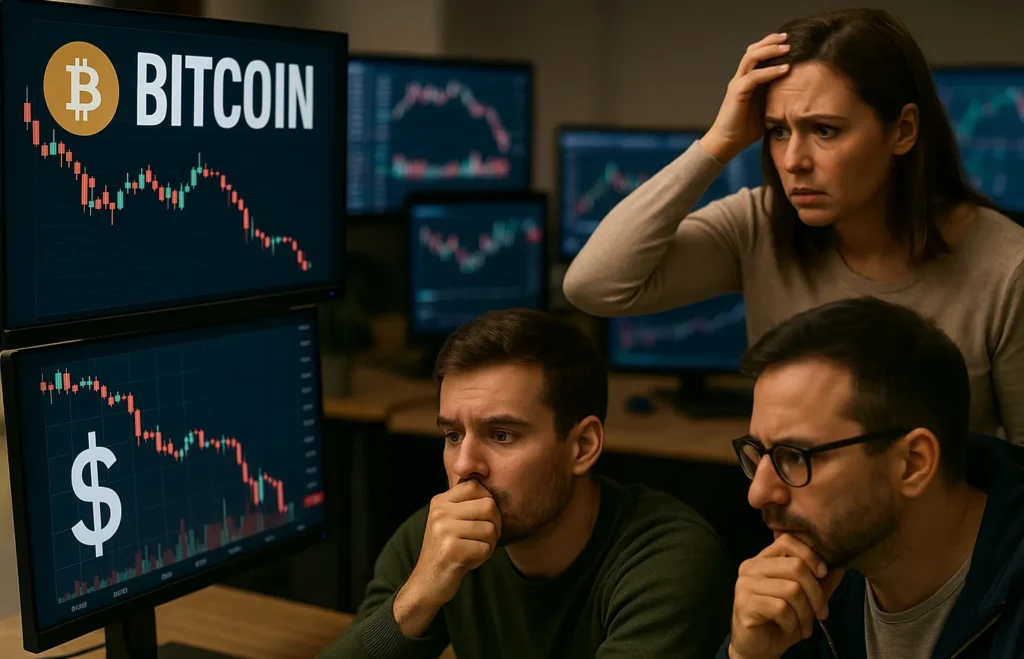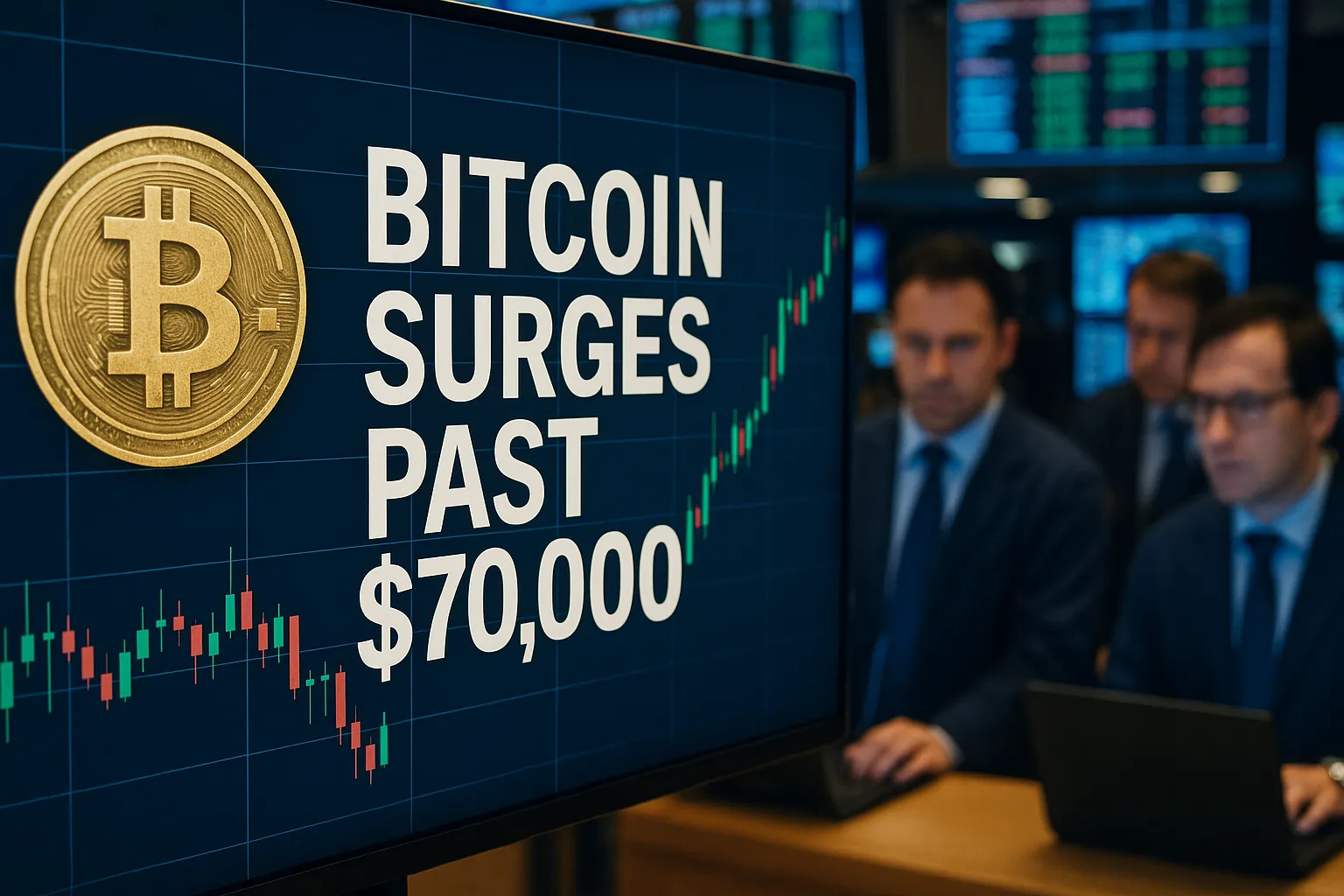The phrase is everywhere: Bitcoin surges past $70,000. Mainstream outlets celebrate it as the dawn of a new financial era. Exchange-traded funds tied to Bitcoin flood in, Wall Street embraces crypto, and the Trump administration’s friendlier stance on regulation clears the path. To the casual observer, it looks like vindication—crypto has “arrived.”
But let’s cut through the noise. This is not a triumph of financial freedom. It’s a speculative mania disguised as progress. Bitcoin at $70,000 is not liberation—it’s a trap built on deregulation, systemic fragility, and political opportunism.
Context: The mainstream narrative
According to Bloomberg and Reuters, the surge came as Bitcoin-linked ETFs finally secured approval in the United States. Institutions piled in, unlocking billions in capital. Ethereum spiked 8% in sympathy, and altcoins followed. Commentators heralded it as crypto’s mainstream baptism, a sign the asset class had grown up and finally earned Wall Street’s blessing.
The Trump administration is portrayed as the enabler. By easing regulatory hostility, the administration supposedly allowed innovation to flourish. Media headlines echo the same chorus: stability, growth, and a “new financial frontier.”
But the official story carefully avoids asking: stability for whom? Growth for whom?
Oppositional Argument: Why the celebration is hollow
I refuse to join the cheerleading squad. Bitcoin’s rally is not proof of maturity; it’s proof of co-option. A movement born to challenge financial power has been subsumed by it.
The lesson from history is clear. In the late 1990s, dot-com valuations soared on hype until they collapsed. In 2008, subprime mortgages were packaged into ETFs and CDOs, hailed as “innovations,” until they brought down the global economy. Every speculative mania follows the same pattern: new product, regulatory blessing, institutional inflows, and then collapse.
So why should Bitcoin be different? It won’t be. ETFs don’t make Bitcoin stable—they make it more exposed. By tying crypto to Wall Street’s machinery, its volatility becomes systemic. What was once the domain of enthusiasts is now a ticking time bomb for ordinary investors.
Bitcoin surges past $70,000, yes—but the price hides the fragility beneath.

Analytical Breakdown: Causes and consequences
Political deregulation
The Trump administration’s stance cannot be ignored. In an effort to project economic growth before elections, officials relaxed oversight. Crypto, once under constant regulatory assault, suddenly became a golden child of “innovation.” This political calculation wasn’t about empowering people—it was about appeasing markets.
Institutional hunger for yield
Wall Street, facing stagnant bond markets and uncertain equities, found in Bitcoin a convenient playground. ETFs opened the gates. Pension funds, endowments, and hedge funds rushed in, driven not by belief in Bitcoin’s mission, but by desperation for returns.
The mechanics of instability
By design, ETFs create liquidity. But liquidity cuts both ways. It enables fast inflows—and catastrophic outflows. When risk sentiment turns, institutions will dump Bitcoin in unison, exacerbating crashes. Far from stabilizing, ETFs amplify herd behavior.
Potential consequences
- Retail pain: Millions of small investors, seduced by headlines, buy at the top. When the reversal comes, they’ll bear the losses.
- Systemic risk: If large pension funds suffer, taxpayers could be on the hook.
- Policy backlash: A future crash will reignite calls for regulation, possibly harsher than before.
Bitcoin’s rally is less about technological progress and more about financial fragility playing out in real time.
Human Perspective: Ordinary people caught in the hype
Consider Sarah, a 30-year-old nurse in Ohio. She poured $15,000 of savings into a Bitcoin ETF after watching financial news anchors describe it as “safe.” She believes she’s securing her future. In reality, she’s gambling on Wall Street’s timing.
Or look at David, a 25-year-old delivery driver maxing out credit cards to buy crypto before it “inevitably” hits $100,000. Social media feeds him constant stories of overnight millionaires. He doesn’t see the million more who lose everything.
Families, retirees, and young workers are being fed the illusion that Bitcoin is a stable path to wealth. In truth, they are cannon fodder for institutions who profit whether prices rise or collapse.
Counterarguments
Defenders argue that institutional adoption ensures legitimacy. They claim ETFs lower volatility and increase investor protection. But let’s examine:
- Legitimacy: Whose legitimacy? Wall Street’s. Crypto wasn’t created to seek Wall Street’s approval.
- Volatility: History shows ETFs don’t reduce volatility; they concentrate it. Look at leveraged ETFs during the 2008 crisis—they didn’t stabilize markets, they exacerbated crashes.
- Investor protection: Retail investors may have easier access, but “access” to a rigged casino is not protection—it’s entrapment.
The counterarguments crumble under scrutiny.
Historical Parallels: A cycle we’ve seen before
- Dot-com bubble: Institutions poured into internet stocks, justified by “new economy” narratives. Most crashed.
- Housing crisis: Mortgages were sliced into ETFs, considered low risk. The result: global meltdown.
- Commodity bubbles: Gold, oil, tulips—it doesn’t matter the asset. Speculative fervor always ends the same way.
Bitcoin’s rally is simply the latest act in this recurring financial theatre.
Wider implications: The Fed and beyond
Markets now await signals from the Federal Reserve. If the Fed hints at tightening, capital will flee. If it loosens, the bubble will inflate further. Bitcoin has become another variable in the Fed’s delicate balancing act.
This irony cannot be overstated. Bitcoin, once envisioned as an escape from central banks, is now utterly dependent on them. Its $70,000 surge is not a victory against the system—it’s proof of capture.
Conclusion: A dangerous illusion
Bitcoin surging past $70,000 is not liberation. It is surrender. Crypto, once a tool of resistance, is now a pawn in Wall Street’s casino. The mainstream calls it progress; I call it betrayal.
The real question isn’t whether Bitcoin reaches $100,000. The real question is who will be left standing when the music stops. And history suggests the winners will be the same few institutions that always profit from manias—while ordinary people pay the price.
If we don’t see through this illusion now, we will live through the crash later. And this time, the fall may drag not just crypto enthusiasts, but pensioners, workers, and families into the abyss.
External Links
97 views





